[ad_1]
Not everyone is meant to be paired collectively. In gardens, merely as in life, some companions merely don’t work out. Companion planting is an effective technique to improve yields, save home, and reduce pest pressure, nonetheless there are some plant mixtures to stay away from because of they’re usually detrimental to the growth of 1 or every crops.
Incompatibilities happen most ceaselessly when you overlook to consider a plant’s progress conduct. For example, a big-leaved zucchini plant will quickly shade out a tiny carrot. Equally, an overbearing kale plant will intently compete with humble lettuce when planted too shut collectively.
Moreover, some vegetation produce compounds that inhibit the growth of others. Companion planting errors with allelopathic crops can dramatically reduce your yields and even kill your vegetation.
Listed below are 21 plant mixtures to stay away from and strategies to cease incompatibilities inside the yard.
What Are Harmful Companion Vegetation?
Companion planting is the science and paintings of rising two crops subsequent to at least one one other for mutual revenue. However, harmful companion vegetation might end up harming each other or lowering yields attributable to incompatibility. The most typical causes for harmful crop pairings embody:
No companion pairing is exempt from spacing requirements. Even when two crops thrive in each other’s presence (like tomatoes and basil), they nonetheless require passable spacing to develop to their full glory.
Spacing turns into significantly problematic when you interplant an unlimited crop with a tiny one. For example, winter squash tends to ramble and vine all over the place within the yard. It’s going to merely trample root crops like radishes. The broad leaves and fast-growing squash vines are moreover liable to shading out one thing planted too close to it.
Species liable to root rot often do not thrive alongside those that require continuously moist soil. Due to this you don’t see swamp vegetation rising inside the desert or vice versa. For example, lavender hates to have “moist ft” or soggy soil in its root zone and may quickly succumb to root rot. It actually prefers poor soil with a gravelly or sandy texture.
However, crops like carrots and spinach take pleasure in fixed moisture in a loamy, rich soil. Combining each of these two with lavender could be detrimental to everyone involved. One crop would bear from an extreme quantity of water, and the other would bear from a shortage.
Throughout the above occasion, we talked about why lavender and carrots could be an unreasonable combination attributable to differing soil moisture desires. The vegetation’ life cycles are one other excuse for this unsuitable pairing. Lavender is a perennial semi-woody crop that grows for 5-15+ years. Carrots are an annual crop that you just develop in a single season (besides you’re attempting to develop it for seeds, at which stage it flowers in its second yr as a biennial).
Often, it’s best to stay away from planting perennials and annuals within the an identical mattress because of managing weeds, nutrient requirements, and harvests is more durable. Due to this many gardens have raised beds for annual greens and border, in-ground beds for companion perennials. However, this rule has only a few exceptions, notably with ornamental beds the place you presumably can mix herbaceous perennials and annual, self-seeding flowers.
Two heavy-feeding crops often make poor companions because of they aggressively compete for restricted soil nutritional vitamins. However, two light-feeding crops can do successfully collectively. You will need to focus to the fertility desires of your crops when determining which ones to plant within the an identical mattress.
Whereas nitrogen-fixing crops like beans and peas can enhance the fertility of the soil, heavy-feeding crops like brassicas and squash sometimes hog the entire nutritional vitamins for themselves. For example, cabbages are very hungry for fertilizer and can snatch away the fertility from less-competitive crops like beets.
Some vegetation even have completely totally different requirements at completely totally different phases of plant progress, as successfully. For example, tomatoes require various nitrogen as soon as they’re first planted for healthful vine progress, nonetheless as quickly as they’ve sized up, it’s best to focus further on providing phosphorus for good flowering and fruiting. This may not be glorious for vegetation like spinach that require a relentless present of nitrogen for good, leafy progress.
Everybody is aware of what happens when you plant a crop inside the “fallacious” season with out right preparation. Cilantro and lettuce nearly on a regular basis bolt inside the heat of summer time season, besides you are taking further precautions equivalent to shade materials or bolt-resistant varieties. Equally, melons and corn planted too early or late inside the season are liable to chilly damage.
Whereas companion planting could be utilized to extend your harvests (e.g. planting lettuce inside the dappled shade of tomatoes), it’s a must to take the seasonal desires of every crops into consideration. A combo of kale and peppers is simply not glorious because of kale prefers cool local weather and turns into significantly liable to aphids all through the heat, whereas peppers love the heat and may’t cope with temperatures beneath 50°F.
21 Vegetation That Should Not Be Planted Collectively
Not everyone mingles collectively successfully, and this stays true inside the yard. Listed below are 21 plant mixtures to stay away from.
Mint and Greens
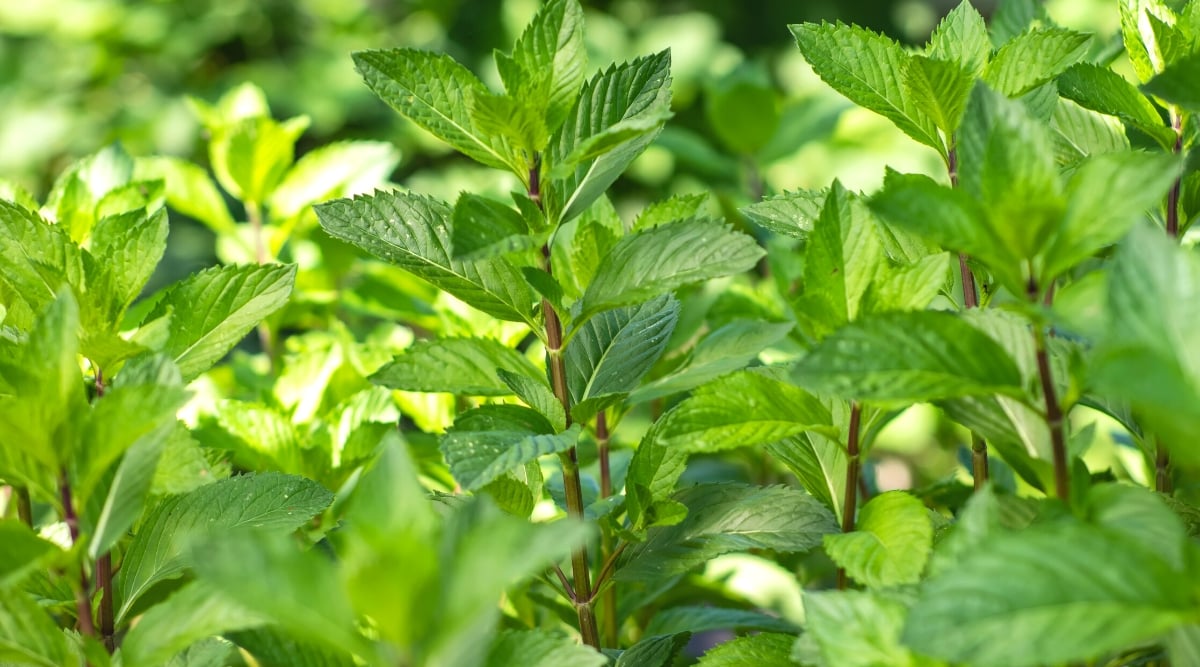

No matter its fantastic fragrance and excellent pest-repellent properties, mint is an herb you on no account want to develop in your vegetable beds. Mint is a vigorous, sometimes aggressive spreader that is best contained in a pot, raised mattress, or ground cowl.
To reap its companion planting benefits, it’s a must to assure it is shut nonetheless not too close to your crops. The fragrance merely travels, and the flowers nonetheless entice useful bugs inside 2-5 ft of a vegetable mattress. You most likely have raised beds, you presumably can develop mint inside the pathways or alongside the margins of your yard the place it might presumably’t creep in. However, on no account plant this herb in a mattress with annuals, or it will overgrow them.
Lettuce and Zucchini
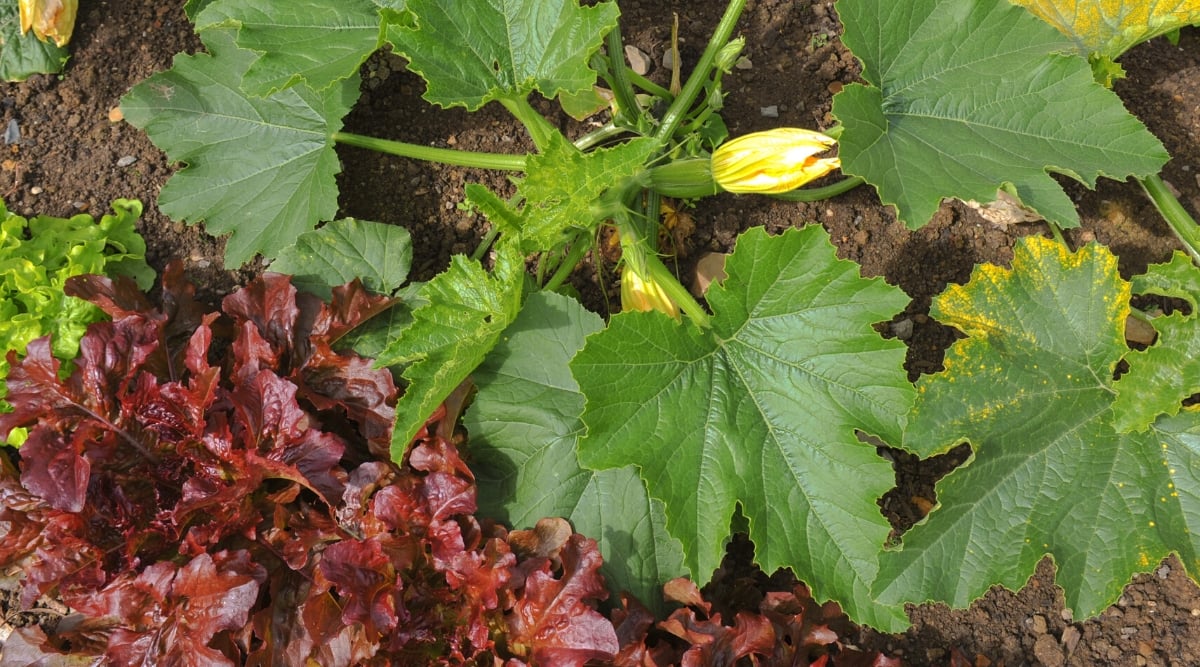

Although lettuce likes barely shade from companions like tomatoes or peppers, zucchini can absolutely shade these greens and out-compete them. Zucchini is an especially fast-growing Cucurbit plant with large, broad leaves.
These leaves are good at suppressing weeds because of they don’t depart lots home for light to filter through to the soil beneath. For many who plant lettuce subsequent to summer time season squash, you could be disenchanted by the tip consequence. The little heads cannot appropriately compete with an unlimited, prickly zucchini plant.
Black Walnut Bushes and Just about One thing Else
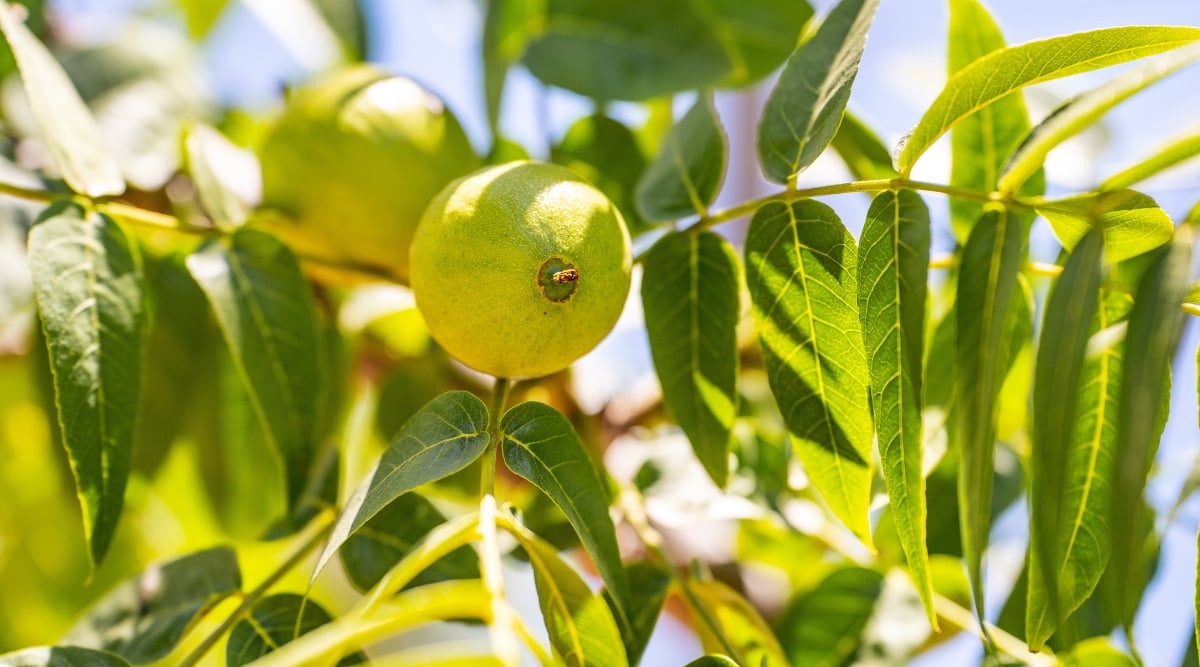

Although it produces delicious nuts, this distinctive tree moreover makes compounds which could be toxic to totally different vegetation. Black walnut timber are allelopathic, which means they secrete a pure herbicide of their roots, husks, and leaves to discourage totally different vegetation from rising shut by.
Moreover, you don’t want to mulch your yard with black walnut picket chips or compost the hulls in your kitchen compost pile. While you’ll be able to compost your black walnut leaves, hulls, and shells in a loyal compost pile, it’s best to utilize that compost correct once more beneath the black walnut tree the place it originated, merely to stay away from any residual outcomes.
If rising beneath a black walnut tree, take into consideration container-growing and take away all particles the tree drops from the yard. Some vegetation might admire its shade, nonetheless they obtained’t be excited in regards to the juglone in all plant elements from the black walnut.
Fennel and Most Greens
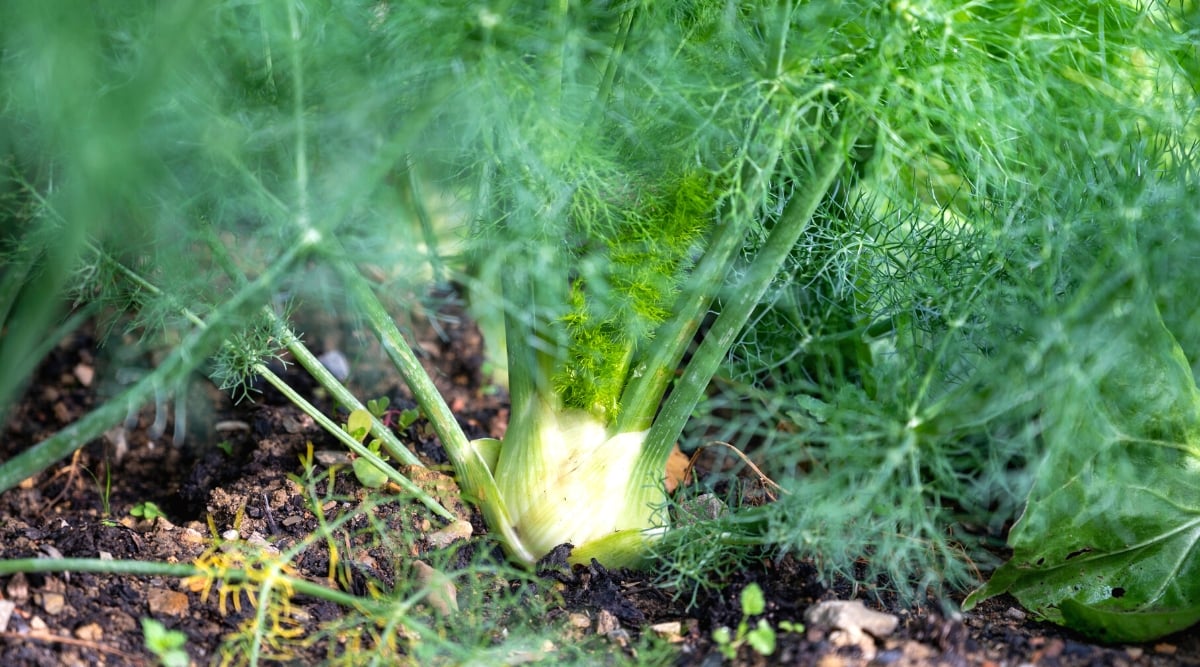

Like black walnut timber, fennel is an allelopathic plant. It produces chemical compounds in its root zone to cease seeds from germinating in its neighborhood. That’s an evolutionary adaptation to help fennel’s ancestors keep large aggressive inside the wild. It helps suppress weeds which can compete with fennel vegetation in your yard. However, it might presumably do further harm than good in case you’re attempting to develop totally different greens shut by.
Indicators of crops grown too close to fennel embody:
- Poor seed germination
- Stunted progress
- Premature bolting
- Yellowing leaves
- Plant demise
The chemical compounds are most concentrated inside the seeds, nonetheless isolating the vegetation is best. Keep fennel in its private yard house, separate out of your crops, notably nightshades like potatoes, tomatoes, and eggplants. It is sometimes grown in an enormous container or planted alongside dill, which is within the an identical family.
Asparagus and Potatoes
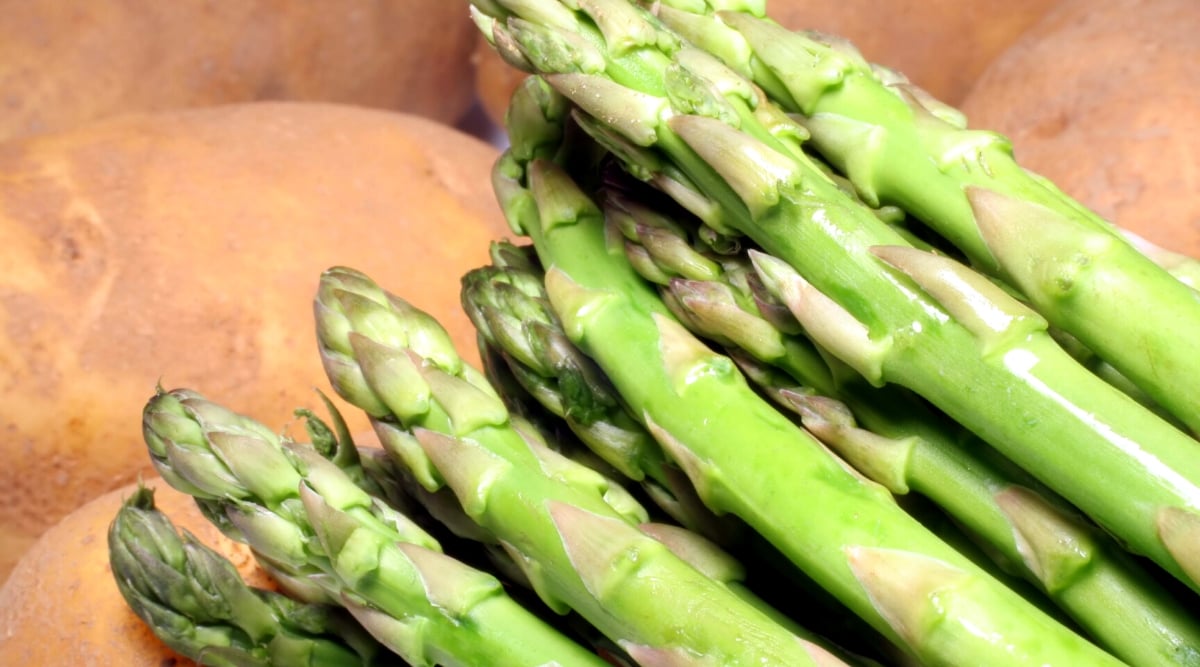

Perennial greens like asparagus are harmful companion vegetation for lots of greens because of they take up lots home all through their full of life progress stage. Throughout the winter, it might appear like you presumably can plant one thing near a barren asparagus patch. When the spears emerge in spring, the vegetation nonetheless seem lowkey. Nonetheless when the sprouts bolt upward and take off, you’ll find yourself with a modest asparagus forest. Not lots can compete with asparagus fronds of their full glory.
Potatoes are a really harmful companion because of their tubers require the an identical underground home as asparagus rhizomes. You obtained’t have the power to appropriately plant seed potatoes or dig them up with out damaging them or the asparagus. Keep asparagus in a loyal perennial mattress in your yard margins, and develop potatoes in deeper soil or a raised mattress with annuals.
Brassicas and Tomatoes
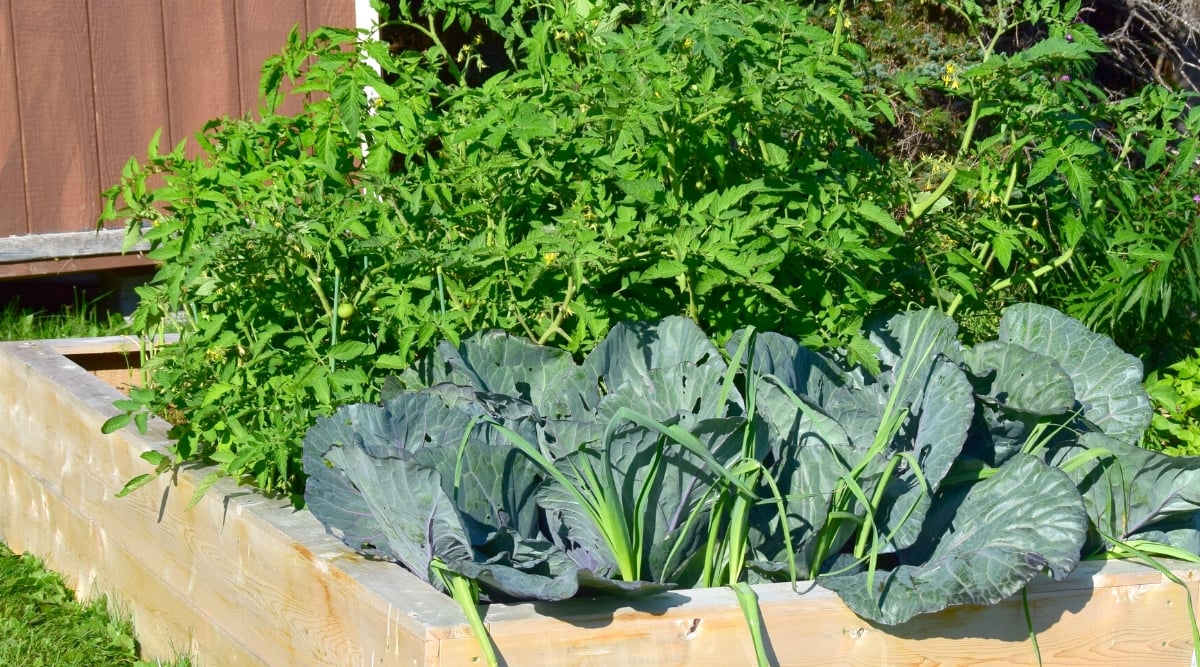

Often, two heavy-feeding crops make harmful companions. The opponents for nutritional vitamins can harm every vegetation and reduce your yields. Planting brassica family members like cabbage, cauliflower, or broccoli with tomatoes can stunt your tomato vegetation because of they suck up so many nutritional vitamins.
In addition to, most brassicas are cold-weather vegetation; they like cooler circumstances to provide successfully (significantly ones like cauliflower or broccoli that may nearly immediately bolt inside the heat). In distinction, tomatoes and most totally different nightshades (other than potatoes) love warmth local weather and tend to wimp out in cooler circumstances. These two aren’t glorious from a seasonal standpoint!
Corn and Tomatoes
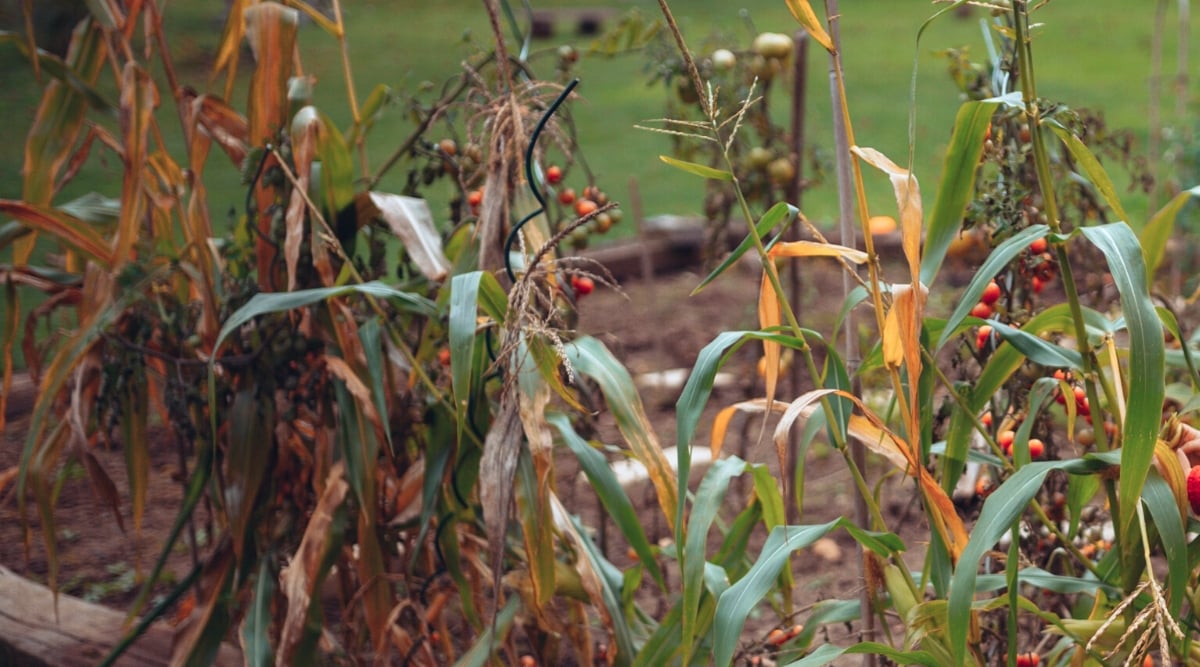

Tomatoes and corn are among the many many most sun-loving crops inside the yard. They’re every heavy feeders that require rich soil and a great deal of nutritional vitamins. Planting these two vigorous growers collectively can spell trouble because of they’re every so demanding. The quick progress of corn may shade out tomato seedlings, whereas the expansive conduct of tomatoes may reduce corn vigor and yield.
The height of these two aggressive vegetation moreover implies that daylight is also restricted for one or every occasions. Stay away from this plant combination so that you presumably can take pleasure in elevated yields of every crops. Plant tomatoes of their very personal raised mattress with trellises and companion vegetation like basil or lettuce. Corn can develop in its private patch or cluster with beans or squash.
Carrots and Dill
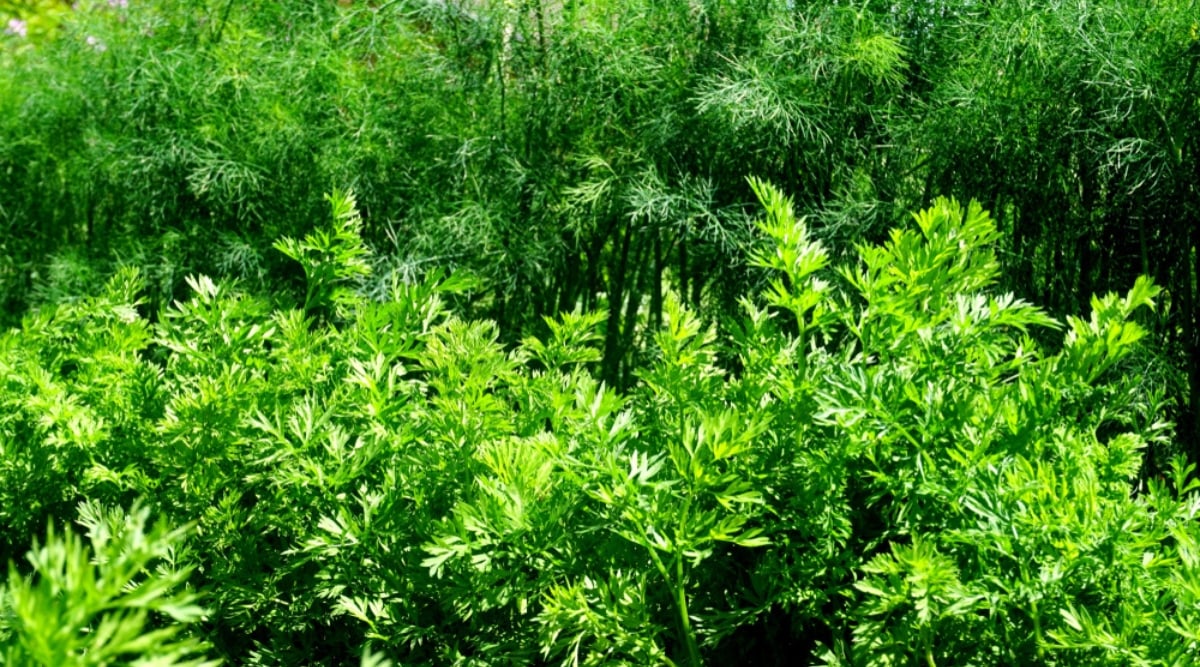

Dill is a extraordinarily useful companion for lots of crops because of the umbel-shaped flowers entice predatory wasps, hoverflies, ladybugs, and totally different useful bugs. However, planting dill near carrots can have the opposite impression. These two crops are within the an identical family, that signifies that every can entice carrot flies, spider mites, and aphids.
Throughout the early phases, their leaves look nearly equal. When dill bolts (goes to flower), it turns right into a further useful companion to totally different crops nonetheless can hinder carrot progress by shading and out-competing the roots. Sow these two in separate elements of the yard intermingled with totally different plant households to confuse pests.
Cucumbers and Melons
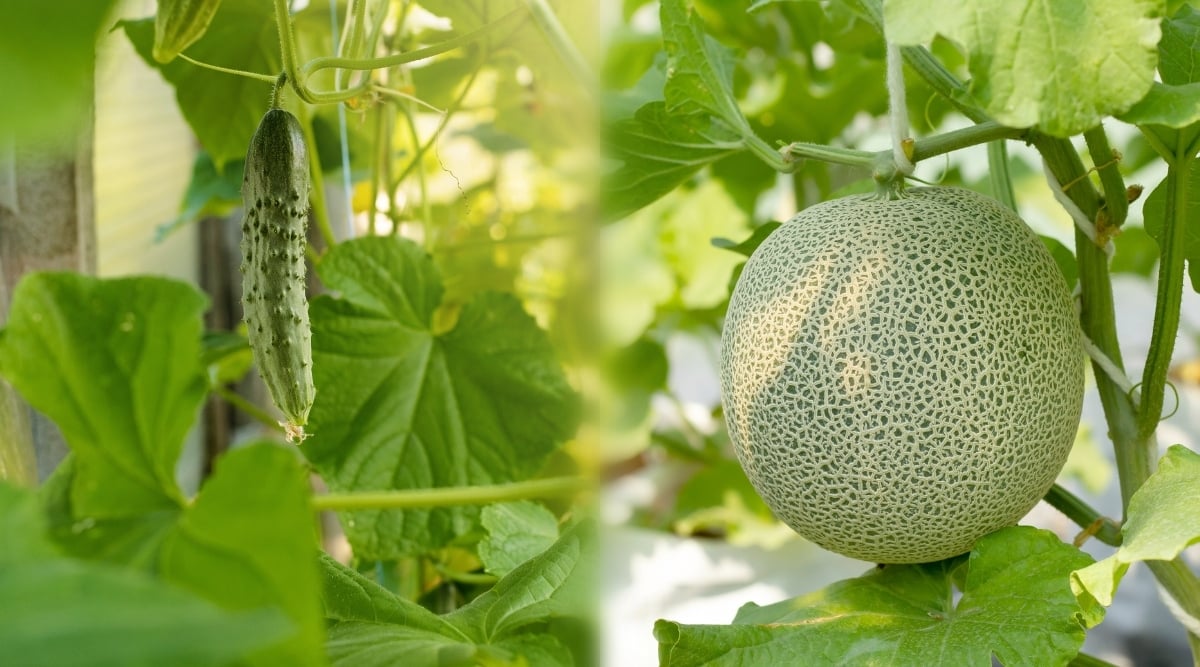

Often, crops within the an identical plant family revenue each other because of they’ve comparable environmental desires. Cucumbers and melons are every members of the Cucurbitaceae family and share the an identical vining conduct. Nonetheless when you pair these two collectively (significantly and never utilizing a trellis), it might presumably quickly develop to be a large number of tangled vines and cucumber beetle damage.
It’s best to separate these two with only a few totally different vegetation in between (like phacelia, marigolds, or alyssum to attract pollinators!) You might arrange a cattle panel trellis for cucumbers and apply them to vine upward. Till you develop smaller melons, it’s best to let these ramble alongside a mulched mattress away from cucumbers. Prune the suckers off every crops to verify they channel their vitality into fruit manufacturing fairly than excessive vine progress.
Though it is best to stay away from this plant combination, there are quite a few larger companion vegetation for melons to consider.
Beans and Onions
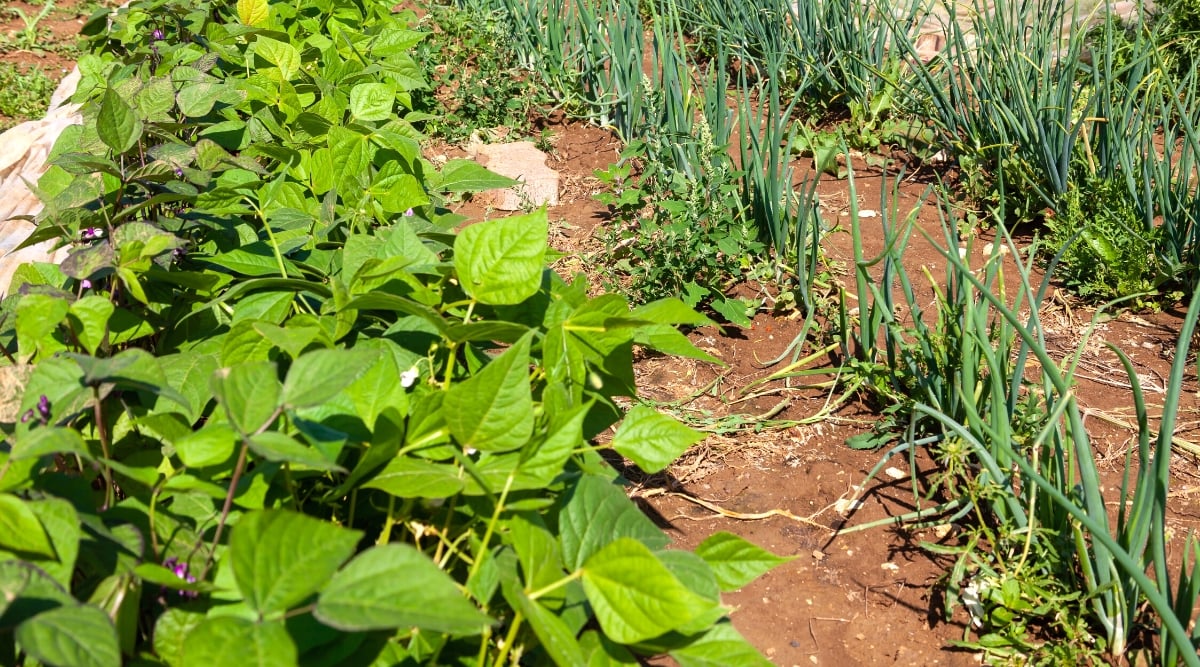

Alliums are often good companions because of they’ve a strong sulfurous odor that repels many pests. Equally, beans are appropriate with dozens of yard crops because of they restore nitrogen inside the soil and don’t usually out-compete their neighbors.
However, science reveals that beans and onions inhibit each other’s progress, significantly all through the seed germination half. Stay away from this plant combination to ensure you get a great deal of inexperienced beans and onions in your harvest meals. It’s best to interplant each species with further welcoming combos, like pole beans and lettuce or onions and kale.
Potatoes and Sunflowers
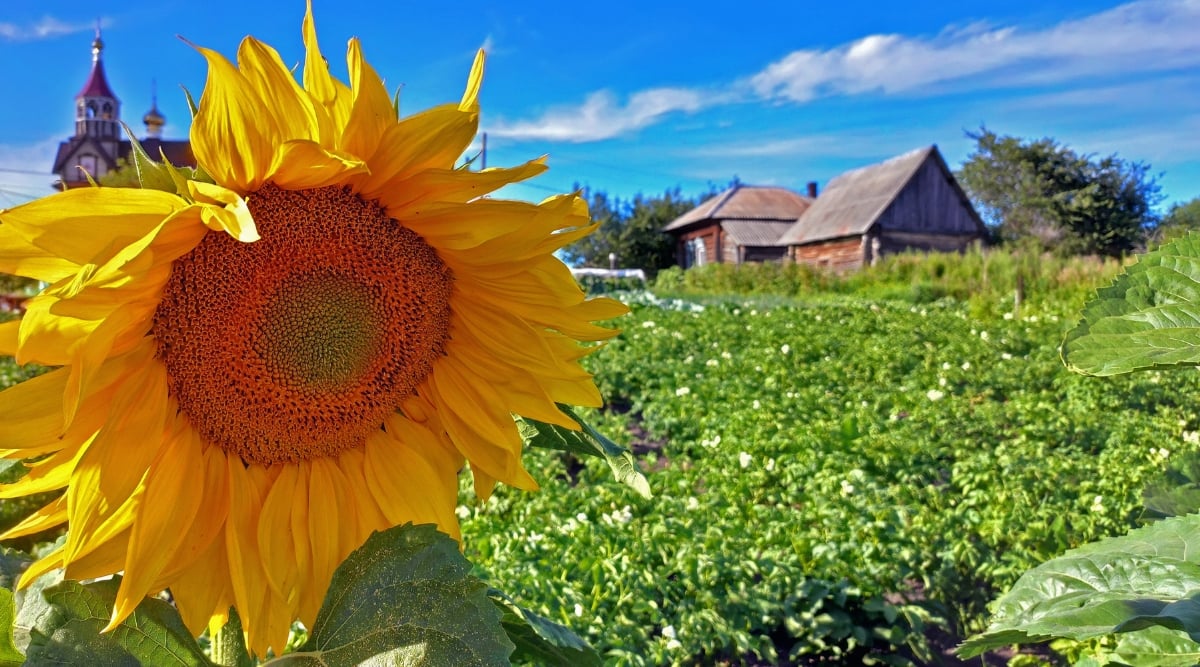

Like black walnuts and fennel, sunflowers are secretly allelopathic to some vegetation. They may not harm cucurbits like summer time season squash or cucumbers, nonetheless they are going to considerably reduce the success of potatoes. Sunflowers launch phenolic compounds that will harm or reduce potato progress. The massive flower heads and focus on stalks may additionally shade out your spuds, leading to leggy stems and weak tuber progress.
Nonetheless, sunflowers entice an array of bees and useful predators that help your yard. I like planting them alongside fence traces on the north facet of the yard so that they don’t stable an unlimited shadow. That’s a lot much less of a problem in case you develop dwarf sunflower varieties.
Blueberries and Greens
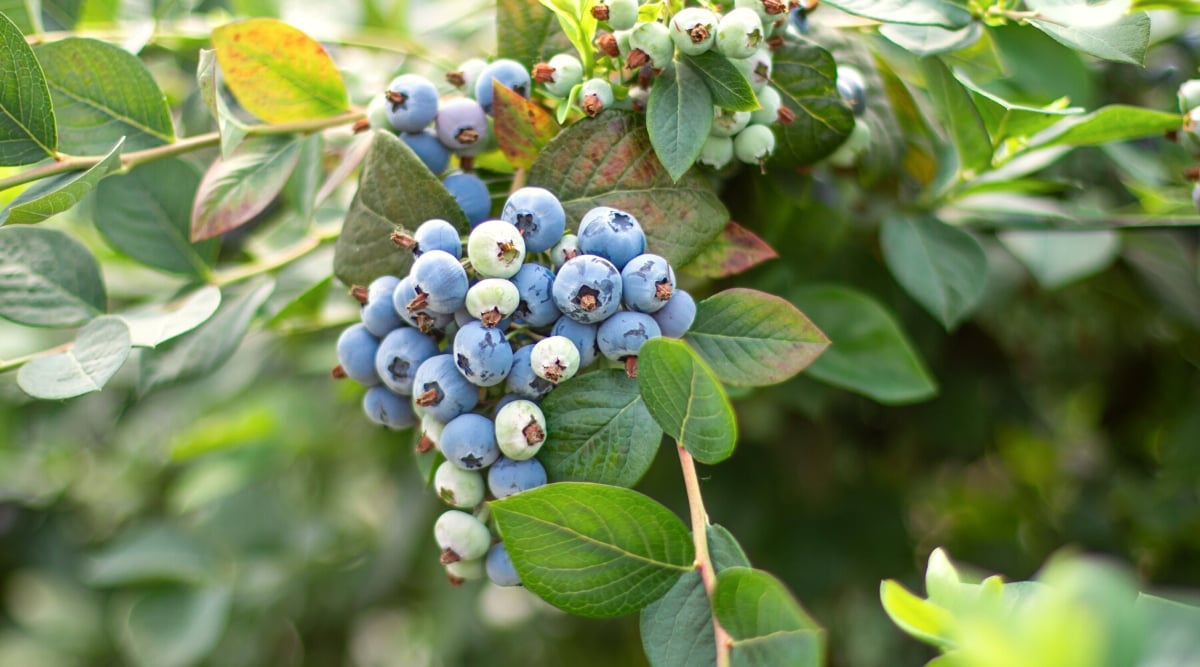

Together with perennial berry bushes to your yard is an thrilling step in the direction of meals self-sufficiency. Whereas strawberries can develop alongside greens, blueberries have very completely totally different soil desires. Blueberries are acknowledged for his or her acid-loving nature, nonetheless most greens favor neutral soil pH.
Furthermore, blueberries are long-lived perennials that obtained’t admire the yearly disturbance required for annual greens. As a fantastic rule of thumb, stay away from plant mixtures with very completely totally different lifecycles.
Keep blueberries in separate beds the place you presumably can mulch and amend the soil with mulches or fertilizers designed for acid-loving vegetation. They make good companions with gardenias, azaleas, and rhododendrons because of these perennial shrubs moreover take pleasure in acidity.
Rhubarb and Low-Rising Crops
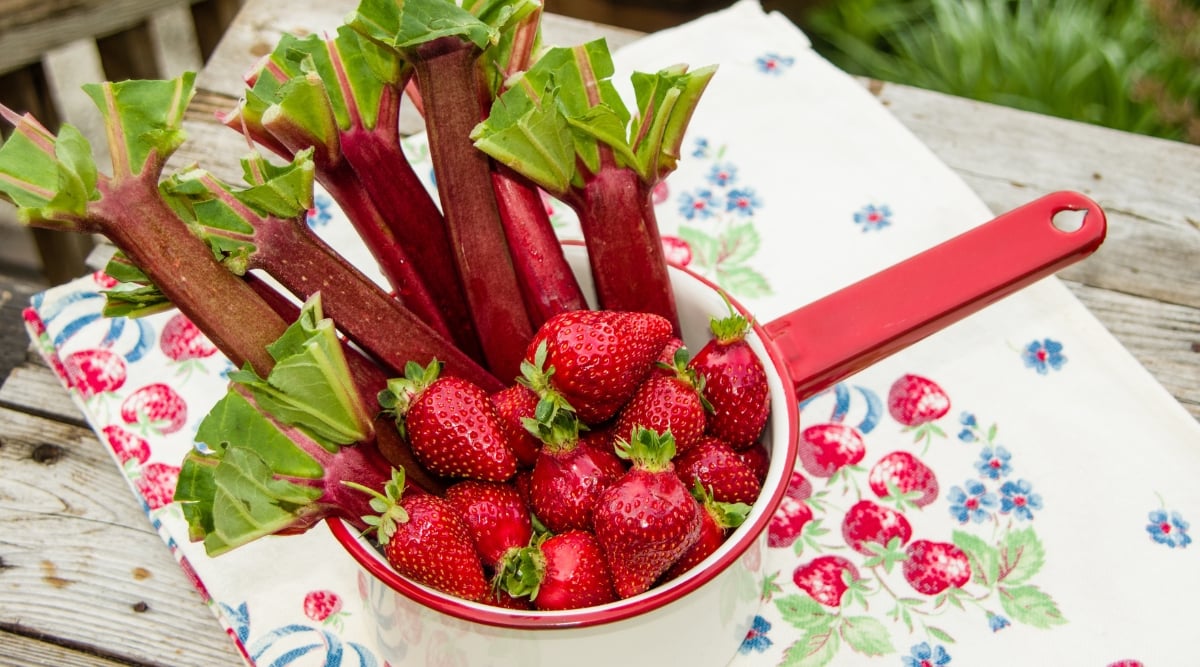

Nothing says summer time season like strawberry rhubarb pie, nonetheless this pink-stalked perennial does not pair successfully with strawberries or one other low-growing crop. Throughout the full glory of summer time season, rhubarb vegetation can span an incredible 4 ft huge and tall. The massive, broad leaves will quickly shade out one thing rising shut by. The huge woody rhubarb rhizomes unfold over time and don’t depart lots soil home for something.
Plant your rhubarb patch behind your yard or in an isolated mattress the place it might presumably dig in for the prolonged haul. Low-growing vegetation must be grown in raised beds or a lot of ft away from rhubarb vegetation to verify they’ve the daylight, water, and nutritional vitamins they need with out opponents from a sturdy rhubarb.
Kale and Cauliflower
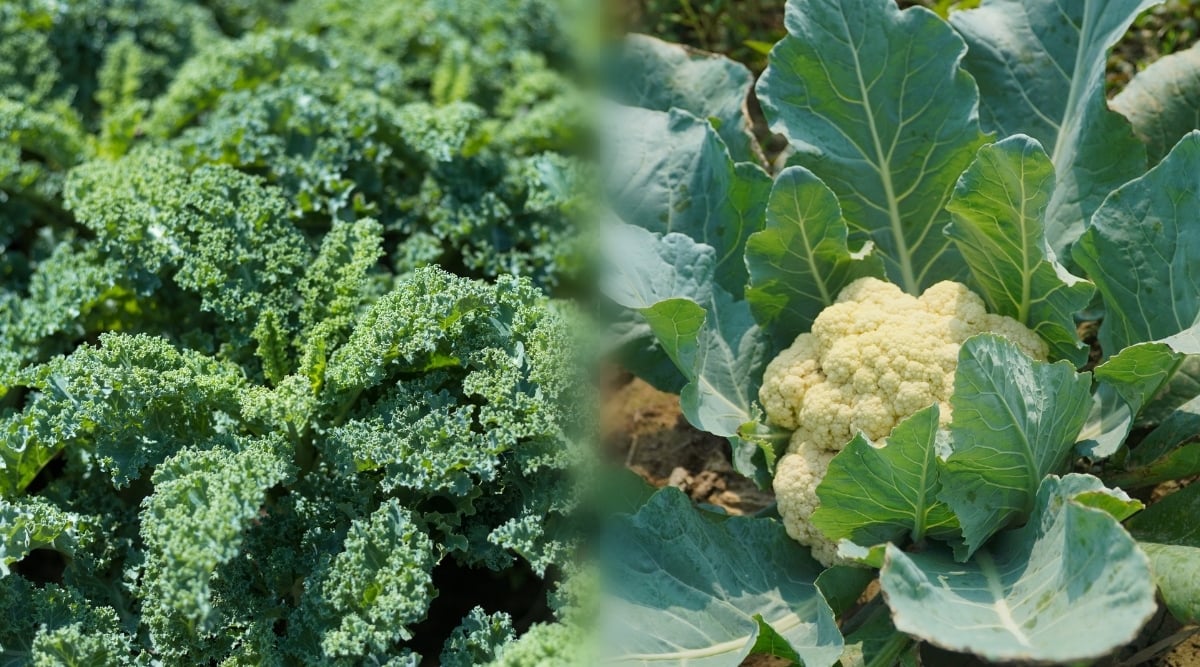

Most brassica-family crops have the an identical desires: full photo voltaic, mildly alkaline loamy soil, fantastic drainage (to forestall black rot), and fixed moisture. Kale and cauliflower should not any exceptions. However, these two crops every favor a great deal of home and don’t make good companions besides you current 18-24” between them.
Counting on the vary, these two could trigger pointless stress and opponents with each other. Kale tends to develop large and upward, whereas cauliflower grows up then out, forming a stout foundation to help an unlimited cauliflower head.
They’re going to moreover entice comparable pests like flea beetles, cabbage loopers, and dreaded aphids. If you happen to want to develop these brassicas within the an identical mattress, plant them on reverse sides and add some white alyssum or marigolds in between.
Nasturtium and Carrots
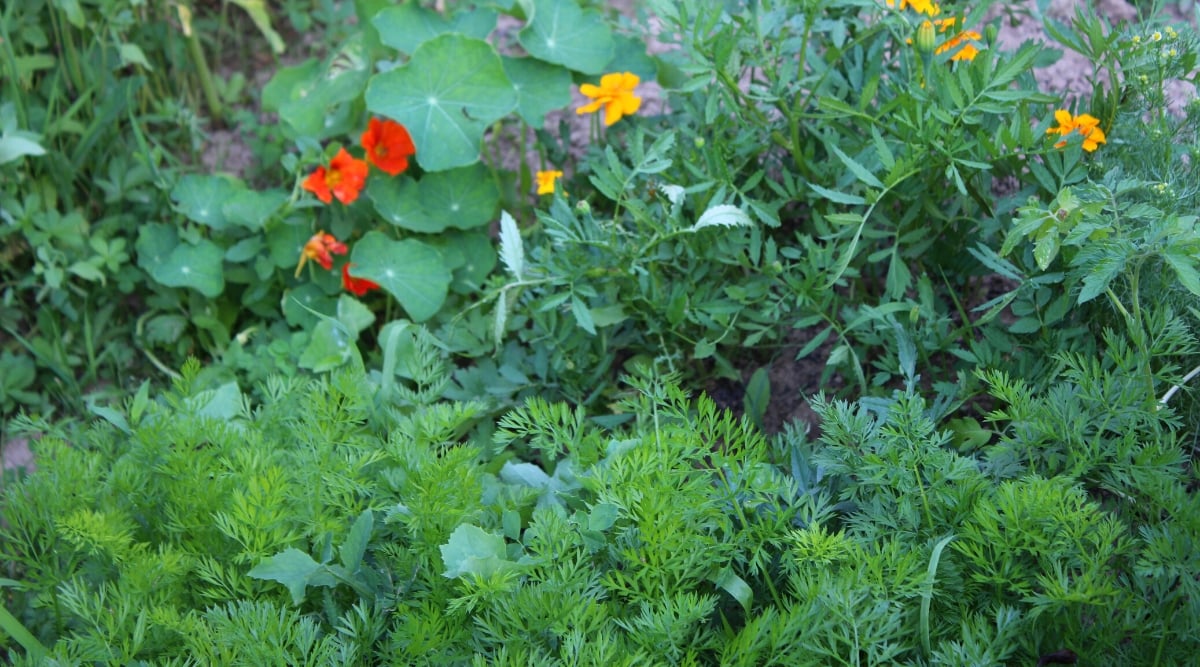

Carrots are an easy companion to sneak in nearly anyplace, and nasturtiums are nice edible flowers that entice many useful bugs and butterflies. The nasturtium plant will also be related to watercress; thus, it has a peppery fragrance that will repel pests.
However, these flowering vines moreover develop insanely large. A single plant can path dozens of ft in any route, climb any fence, or grow to be an unlimited mound 5+ ft in diameter. Moreover, nasturtiums are warm-weather flowers, and carrots are prone to do best inside the cooler seasons of spring and fall.
It’s best to stay away from plant mixtures that battle in dimension and seasonality. Instead, maintain nasturtiums in your yard borders or in containers with a trellis to permit them to vine upward. Carrot greens are too frilly to compete with the broad, lilypad-shaped nasturtium leaves. These roots are best sown of their very personal mattress with entry to full photo voltaic and fewer opponents.
Beets and Pole-Conduct Legumes
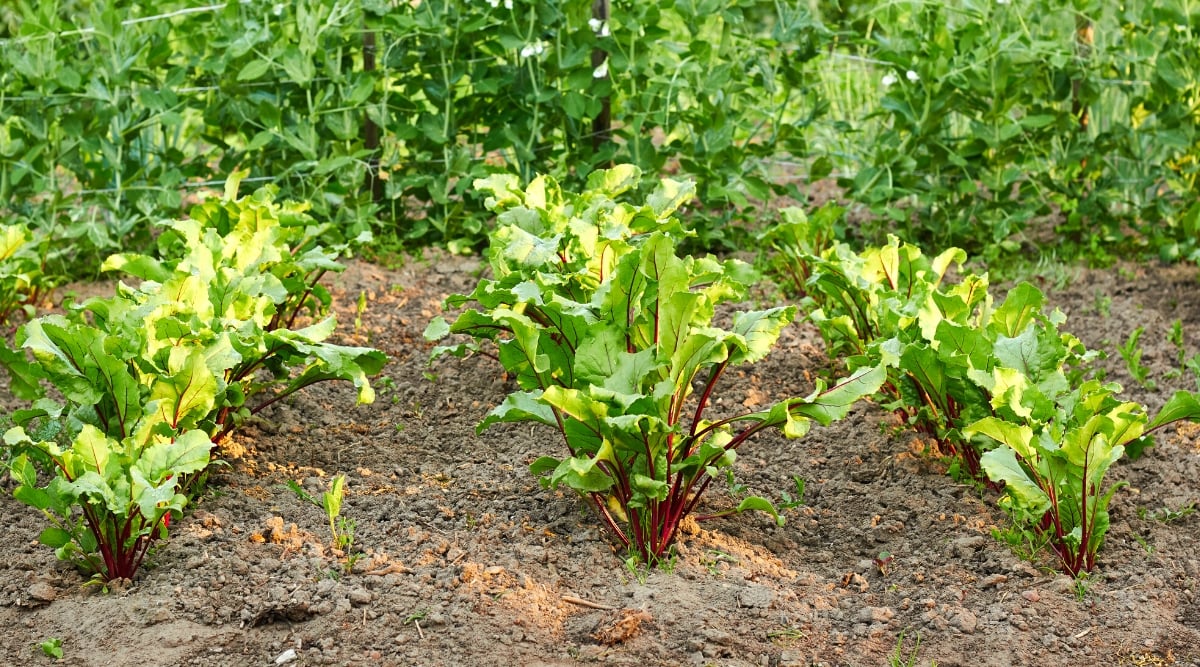

Bush beans are useful for beets because of they provide further nutritional vitamins and develop to the identical dimension. Nonetheless pole beans or peas can stunt beet progress attributable to their vining nature and potential for shading out the beet greens.
As members of the Chenopodiaceae family with chard, beets favor a minimum of 6 hours of daylight per day. As soon as they don’t get adequate photo voltaic, the roots develop small, and the foliage can flip pale. This combo solely works when you may have the vining legumes on the north facet of the mattress and a great deal of home for the beetroots to variety.
Tulsi Basil and Peppers
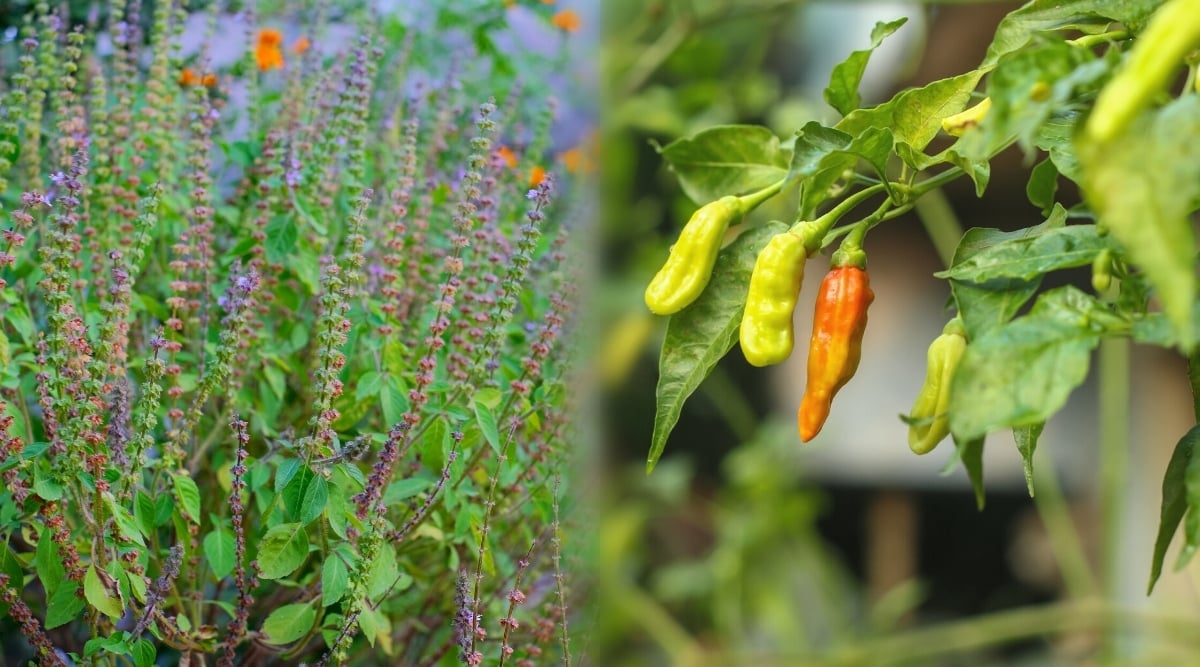

Holy basil, or tulsi, is a nice herb that produces fragrant, delicious foliage and delightful flowers that magnetize bees and useful predators. Nonetheless this herb can get remarkably large and bushy. Interplanting tulsi with a compact pepper plant might create an extreme quantity of opponents for the peppers and reduce your yields.
Keep holy basil in your herb beds or a minimum of 1-2 ft from shut by vegetation. It should most likely nonetheless be a wonderful companion for peppers as long as the pepper vegetation have home to bush out and attain the photo voltaic.
Lavender and Joe Pye Weed
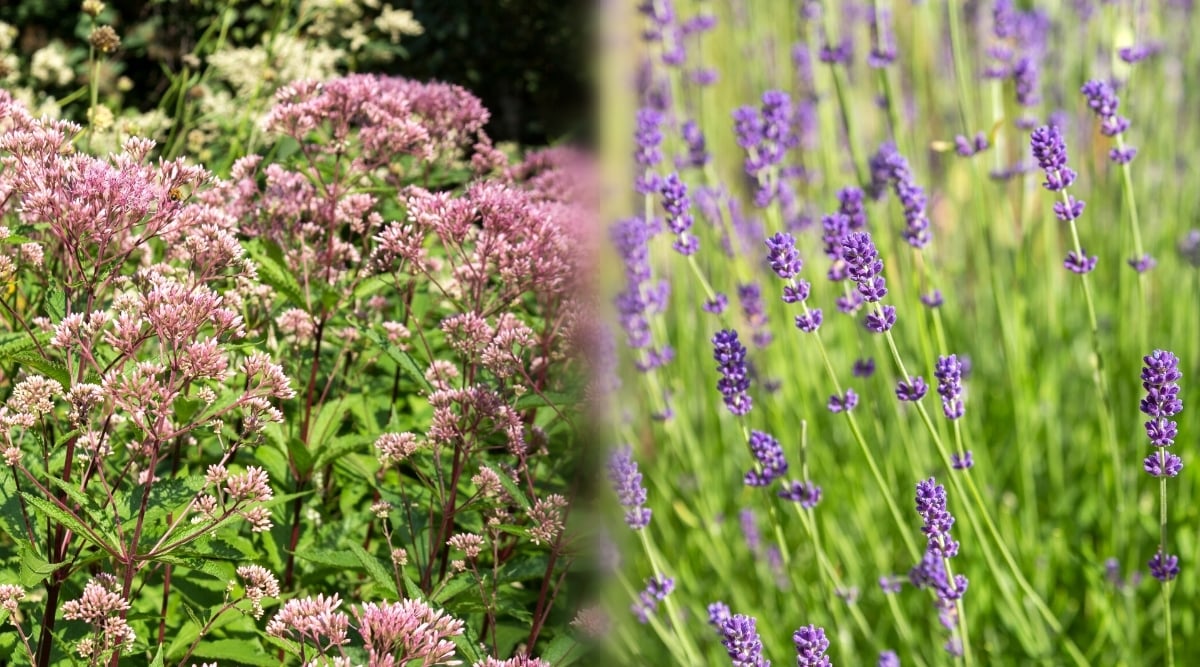

The principle topic with this ornamental combination is water. Lavender is a Mediterranean herb tailor-made to terribly well-drained soil and prolonged intervals of drought. An extreme quantity of moisture could trigger root rot and lavender plant demise. On the flip facet, a moisture-loving perennial like Joe Pye weed enjoys numerous water and does not look very fully comfortable all through events of drought.
Neither plant wishes soggy soil, nonetheless lavender would bear with the amount of water required by Joe Pye weed. Pay attention to the water desires of your vegetation to verify they develop inside the neighborhood of those with comparable moisture desires.
Butterfly Weed and Impatiens
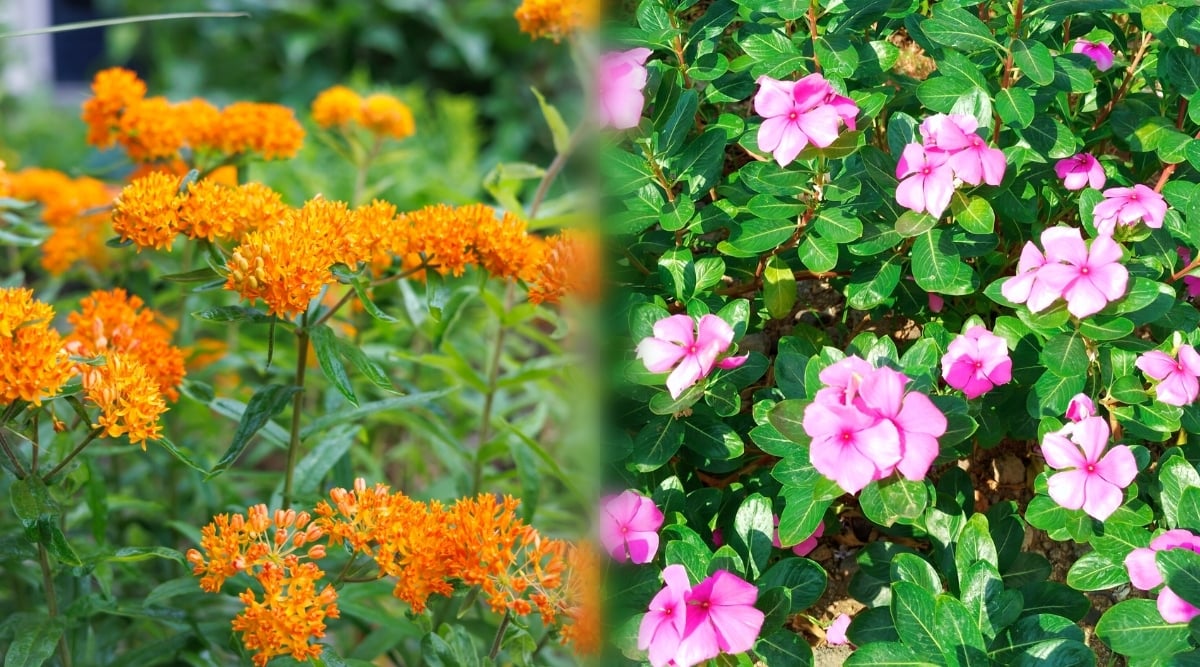

These two flowers have vastly completely totally different desires, making them a horrible pair inside the yard. Butterfly weed loves numerous photo voltaic and dry, well-drained soil. Nonetheless Impatiens crave moisture and bear all through drought. Although these flowers might look good collectively, one will bear if the soil and water desires of the other plant are prioritized.
Bamboo and Greens


Most people don’t discover how aggressive bamboo could also be. This grass-family ornamental is great for stopping erosion and colonizing moist clay soils. However, I’d on no account, ever plant bamboo near a vegetable yard. The vegetation unfold by means of underground rhizomes and may quickly take over a yard in case you don’t try and comprise them.
Some bamboo species will preserve behind a border ditch or a rock-lined mattress, nonetheless others improve anyplace there could also be moisture and photo voltaic. Bamboo stalks develop very dense and shut collectively, forming thick colonies which could be troublesome to eradicate. Keep them distant out of your greens, and choose a bamboo species that is not invasive in your house.
Clover and Greens
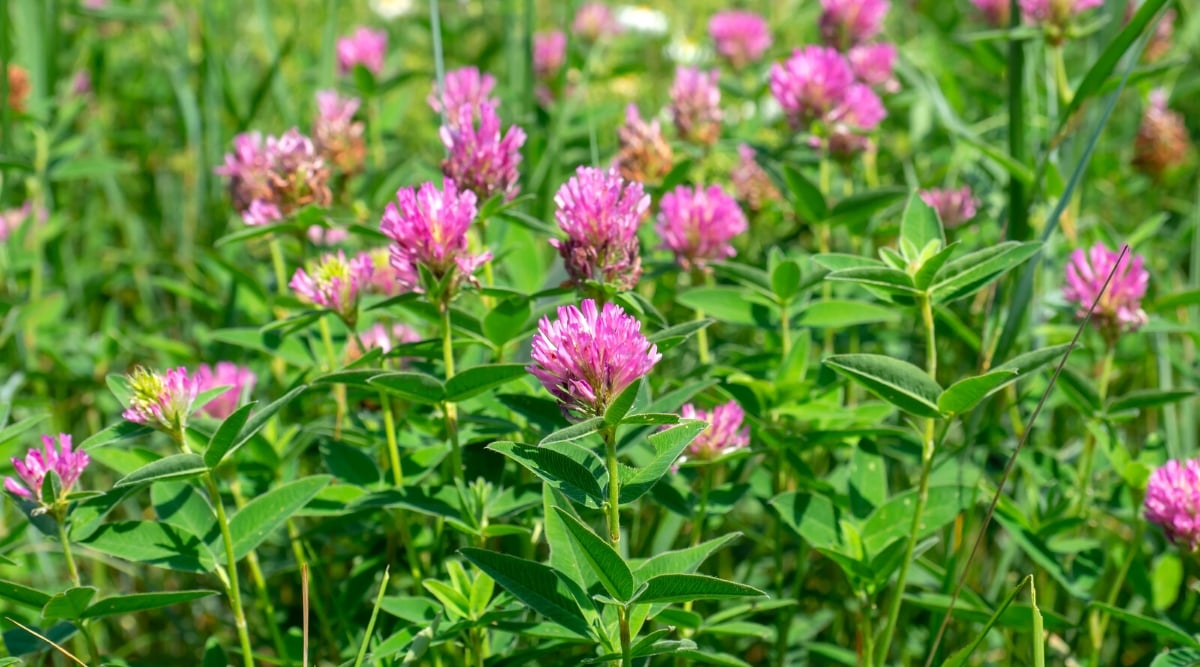

Like mint, clover is an excellent companion plant with nectar-rich flowers which could be good for pollinators. The vegetation moreover restore nitrogen underground and provide lovely ground cowl to take care of the soil cooler and weed-free. Nonetheless it is best to on no account plant clover in your vegetable beds whereas the greens are in place.
These legumes unfold shortly and easily overtake annual crops. Their roots variety thick mats inside the soil which could be troublesome to remove. I favor to take pleasure in clover as a backyard different or pathway ground cowl between raised beds. Rising at ground stage ensures it may’t unfold up into your beds.
If you happen to’re not actively rising greens inside the mattress, take into consideration planting some clover in that home! This leguminous plant is a nitrogen-fixer, and as its roots decay after it stops rising, it releases nitrogen into the soil that totally different vegetation can revenue from – collectively along with your greens. Nonetheless concurrently rising clover alongside your veggies isn’t glorious.
Closing Concepts
Whereas companion planting can current nice benefits and sweetness to your yard, you will have to plan sooner than you cluster a lot of species collectively. Much like individuals, every explicit individual has its private desires and preferences. Primarily essentially the most appropriate species will share comparable progress habits, seasonality, water and soil desires, and nutrient requirements.
If a plant is overly aggressive or requires reverse circumstances, save your self some trouble and maintain them separate. Moreover, pay explicit consideration to allelopathic vegetation that produce compounds that will suppress or kill their neighbors.
[ad_2]


